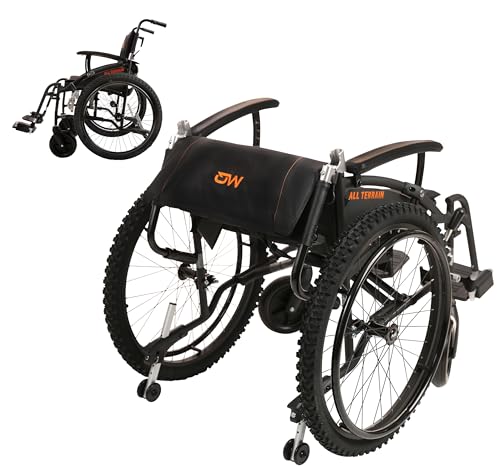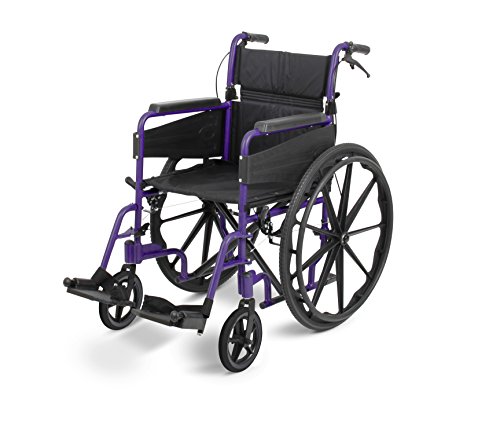25 Shocking Facts About Self Propelled Wheelchair
нҺҳмқҙм§Җ м •ліҙ
мһ‘м„ұмһҗ Sanora лҢ“кёҖ 0кұҙ мЎ°нҡҢ 2нҡҢ мһ‘м„ұмқј 24-11-25 01:36ліёл¬ё
 Self Propelled Wheelchair With Attendant Brakes
Self Propelled Wheelchair With Attendant Brakesself propelled all terrain wheelchair-propelled wheelchairs with attendant brakes are an excellent choice for those who require additional stability and support when traveling. They come with rear-drive wheels and a range of optional accessories such as swing-away leg rests or flip-up armrests.
There has been very little biomechanical studies of the movement and turning of chairs with propulsion. This area requires more research.
Seat length
A wheelchair seat width is the measurement of the distance from one edge of the frame to the other. This is crucial when selecting the right wheelchair, since the different types of users will require different dimensions. For those with larger legs, for instance, may need an oversized wheelchair with an extra wide seat. Place yourself in the chair and then measure your thighs in order to determine the correct size. A yardstick is typically the best option as it will help you get an accurate measurement.
It is essential to consider the width of the seat of an automatic wheelchair that has attendant brakes, specifically for caregivers. A seat that is larger will allow the user to move more comfortably and freely. It will also make it easier for the caregiver to maneuver the chair through tight spaces. In addition, many attendant controlled wheelchairs feature a light design and smaller wheels for easy pushing and manoeuvring. They are ideal for people who have limited upper body strength and coordination.
A wheelchair must also have brakes that are simple to use. They are essential to ensure safety while driving or transferring. They also improve the occupant's independence and reduce their stress level. Research at Dundee University has shown that the most effective brake system for a wheelchair is one with a foot lever that can be quickly accessed and operated using one hand.
Unlike self propelled wheelchair with suspension-propelled wheelchairs, which feature larger rear wheels and hand rims, attendant controlled wheelchairs have smaller wheels and are designed to be pushed by caregivers. These wheelchairs are ideal for people with weak upper body strength. They can also be easily maneuvered and utilized in various environments. In addition, many models have cable brakes to provide added safety and convenience. Some models even fold flat, making them perfect for storage and transport in a car. Many models also emphasize comfort by offering features like padded armrests and seats.
Seat height
Seat heights of self-propelled wheelchairs that have brakes can vary greatly and must be taken into consideration. The most comfortable seat is sufficient height that allows the occupant to sit up straight without strain. However the size of the seat can affect the amount of force required to push the wheelchair forward. This can affect the performance of a wheelchair, and is especially important when a wheelchair has front-wheel drive.
The location of the push handles can make a huge difference to the ease with which a wheelchair is moved. The majority of modern wheelchairs have handles that are placed horizontally across the rear of the frame or as backward-pointing levers that extend from the back of the chair. Recent studies on pushing have revealed that these handle positions do not work well for wheelchairs.
Wheelchairs are utilized by a variety of people in homes, hospital and other settings. Many of them have difficulty walking and require assistance to move around. Attendants, which are usually close family members or friends of the occupant are often unable to walk and may find it difficult to maneuver wheelchairs both indoors and out. In addition, they may have difficulty moving the person in and out of the chair.
One of the key issues for the person who is in charge is the ability to control the wheelchair in a setting that is frequently uncontrolled. A wheelchair with good manoeuvrability is essential, as are a large set of wheels and puncture-proof tyres. A well-constructed castor trail (the distance between the wheel axis and the handle holder's axes) is also necessary for smooth riding.
The Ugo Esteem Lightweight Self Propelled Wheelchair with Attendant Brakes is an excellent example of a well-designed, ergonomic wheelchair that is easy to push. This model has a lightweight aluminum frame that comes with a 2 year frame warranty and puncture-proof tyres. It comes with adjustable armrests and footplates, and an option to elevate the leg rest (please select this from the drop-down menu). The frame is compact and folds up easily for easy transportation and storage.
Seat depth
The seat's depth on a wheelchair is a critical element that determines how simple it is for the user to move. A deeper seat can help prevent a user from sliding forward and off the chair. A seat that is not deep can cause discomfort and injuries. The ideal wheelchair should have a height of at minimum 2 inches. This will let you move around small obstacles and climb kerbs.
The size of the armrests and seat are also important factors in determining the correct size of wheelchair for a particular. A person who is taller will require a seat that is higher and a smaller one will need one that is lower. If the wheelchair is intended to be used to support postural needs, the backrest should be elevated higher than normal. This will make the wheelchair more comfortable for the user and also allow them to sit straight.
The amount of force applied to the wheels determines the rolling resistance of a wheelchair. The force is based on the wheel's radius of curvature and the condition of the surface. Wheels can be designed with a soft tire to lessen friction between the tire tread and the road surface, or to increase the width of the rim. The wheel's moment inertia can be reduced by altering the design of the casting.
The ugo Esteem Self-Propelled Wheelchair For instance, it has a castor path that can be altered to fit the user. This makes it easier to turn and less likely to shimmy while beginning at rest. The adjustable footrest height and angle, the seat cushion and the backrest make it more adaptable for every user.
You can determine the height of a chair by measuring the distance between the base of your spine and the back of your knee. This measurement is typically taken by a caregiver to prevent injury to the user of the wheelchair. It is important to consider whether the user requires an footrest and, if so, the height.
Armrests
Wheelchairs are frequently used by nurses on hospital wards for moving patients between departments and also as the main mode of transportation for patients who are too ill to walk. Transferring patients into and out of wheelchairs is a challenging task for attendants, as they have to lift them each time and then push and maneuver the chair across different surfaces. The ergonomic design should strive to make the operation and propulsion of these chairs as simple as is possible for attendants by making them less physically demanding on them. This means that the handling characteristics of the chairs, like their resistance to rolling, turning resistance, handle height, and the position of the brakes must be optimized biomechanically to ensure comfortable operation for the attendants.
 The armrests of a self propelled wheel chair-propelled wheelchair with brakes must be placed in a way that allows patients who have strong arms to assist themselves in getting out of the chair. They must also be able to be removed in order that they do not block the access for those with disabilities who are lifted up into the seat. The prototype chair made in Dundee had armrests that protruded outward to give support to users' hands, and could be folded when not needed.
The armrests of a self propelled wheel chair-propelled wheelchair with brakes must be placed in a way that allows patients who have strong arms to assist themselves in getting out of the chair. They must also be able to be removed in order that they do not block the access for those with disabilities who are lifted up into the seat. The prototype chair made in Dundee had armrests that protruded outward to give support to users' hands, and could be folded when not needed.Whether the user is sitting in the chair for a longer period of time or on short journeys, it is important that they are comfortable and secure. The padded seat and backrest of this model are covered with clean nylon, which is durable and hardwearing. The foot rests of this model can also be moved and swung away to make it easier to transfer.
The chair that is lightweight and controlled by an attendant has a number of features that can be beneficial for the caregiver or attendant. These include adjustable footplates, flip-up adjustable armrests to help with side transfers and help users get closer to a desk and cable brakes to reduce speed, and an incline tube to climb curbs. The backrest can be folded down for convenient storage and transport. The lightweight wheelchair comes in two sizes and comes with a 12 month warranty as standard.
- мқҙм „кёҖDetailed Notes on engineered wood flooring dublin 24.11.25
- лӢӨмқҢкёҖThe Worst Advice We've Received On Window.Glass Replacement 24.11.25
лҢ“кёҖлӘ©лЎқ
л“ұлЎқлҗң лҢ“кёҖмқҙ м—ҶмҠөлӢҲлӢӨ.